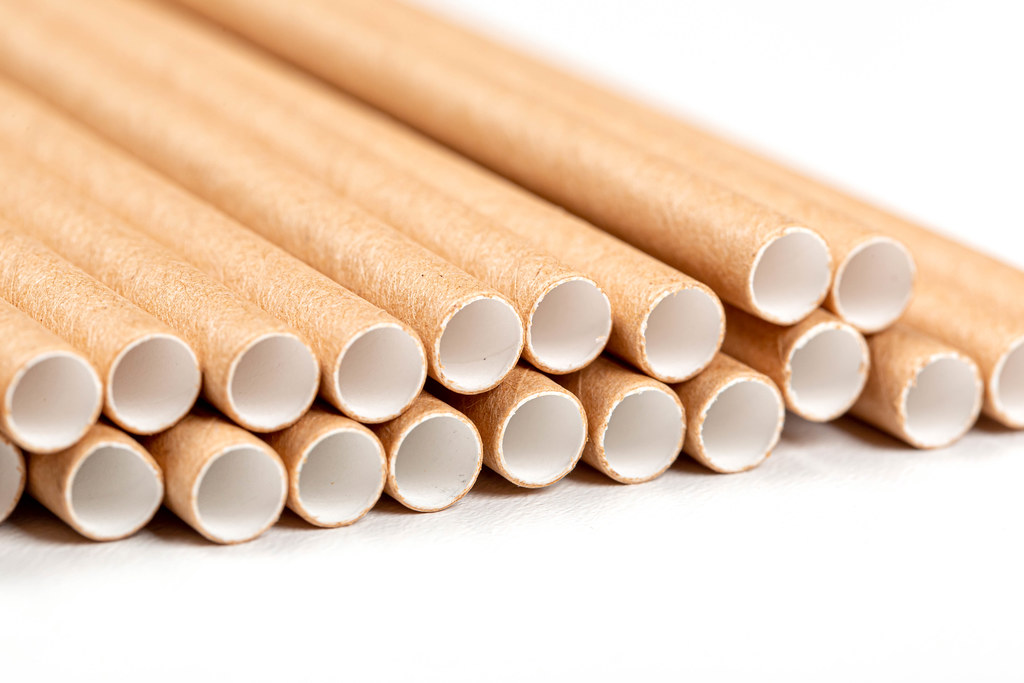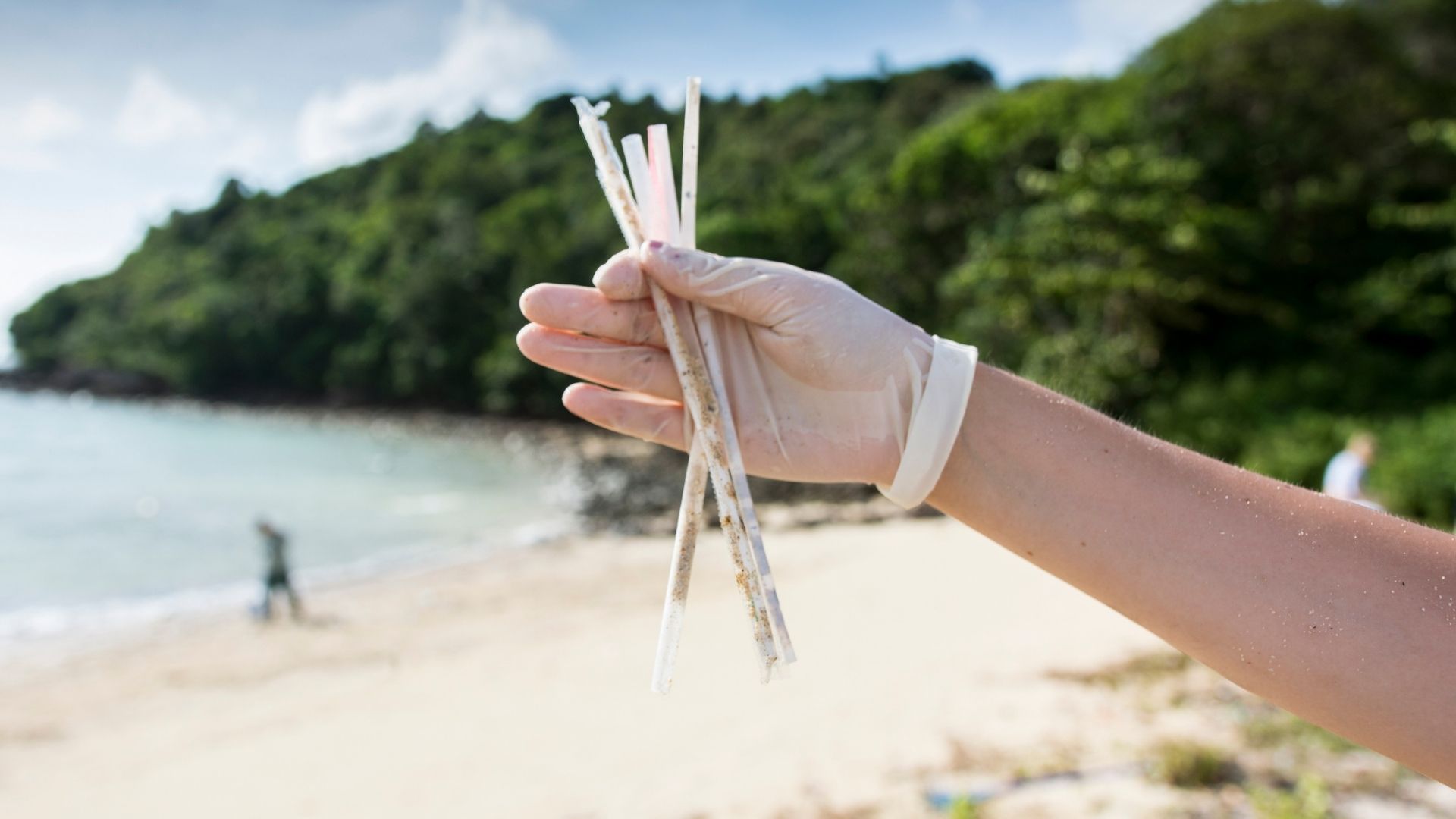With increased awareness of plastic pollution, many restaurants and fast food chains have started providing paper straws as an alternative.
This switch has been touted as an eco-friendly move, but is it really better for the environment?
Are Paper Straws Environmentally Friendly?

While paper straws may seem like an environmentally friendly choice over plastic, the reality is more nuanced.
Paper straws are produced using trees, chemicals, and energy.
They cannot be recycled and degraded if littered. Reusable straws are better for the environment.
Key Points
- Paper straws require cutting down trees and the use of toxic chemicals
- They degrade if littered and are not recyclable or compostable
- Reusable straws are more sustainable than single-use paper straws
Our Opinion
In my opinion, paper straws are not the ideal eco-friendly solution many believe them to be.
The most sustainable option is to avoid single-use plastic straws altogether by using reusable straws made of materials like metal, silicone, or glass.
While paper straws have some benefits over plastic, their drawbacks show they are far from environmentally friendly.
Are Paper Straws Really Environmentally Friendly?

While paper straws seem like a sustainable option at first glance, they may not be as green as you think. Here are some key considerations on the environmental impact of paper straws:
- Paper straws contain toxic “forever chemicals” – Paper straws are often treated with PFAS, also known as “forever chemicals,” to make them waterproof. These chemicals do not break down and can accumulate in the environment and our bodies.
- They still produce waste – Even though paper straws biodegrade more quickly than plastic, they are still single-use items that ultimately end up in landfills. This contributes to the waste problem.
- It takes energy to produce them – Paper production requires cutting down trees and uses large amounts of water and energy at mills. The paper also needs to be bleached during processing.
- Performance issues – Paper straws get soggy quickly, can’t be reused, and alter the taste of drinks. This means more straws are discarded after one-time use.
While paper straws seem like an easy fix, they have significant environmental consequences. There are more eco-friendly options like reusable straws made of materials like bamboo, glass, or metal. But the best solution may be skipping the straw altogether when possible.
The key takeaway? Despite marketing claims of being biodegradable or recyclable, paper straws are not truly an environmentally sustainable alternative to plastic. More thought needs to be put into reducing single-use culture and disposable consumer items like straws that are so easily discarded after one use.
Paper Straws vs. Plastic Straws
With plastic straws falling out of favor due to environmental concerns, paper straws have emerged as an alternative. But how do paper and plastic straws really compare in terms of sustainability?
Plastic straws are cheaper and more durable, but they can take hundreds of years to decompose. Many end up as plastic pollution contaminating oceans and harming marine life. Plastic also breaks down into microplastics that enter the food chain.
Paper straws seem like an easy fix, but they have downsides too. The production process uses lots of water and energy. Chemical coatings applied to paper straws also raise health concerns. And paper straws still create waste even if they biodegrade faster.
Ultimately, both paper and plastic straws have an environmental impact. The most eco-friendly solution is to avoid single-use straws altogether. Reusable options like glass, stainless steel, or bamboo straws are sustainable alternatives. Or simply drinking without a straw when possible.
Rather than swapping one disposable material for another, the priority should be reducing reliance on convenience items that are used briefly and then tossed. This requires both businesses and consumers to reconsider single-use culture.
Small changes like skipping the straw can add up to real reductions in waste. However, systemic solutions are still needed to curb the environmental damage of disposable plastics and unsustainable manufacturing.
How Long Do Paper Straws Take To Decompose?

Paper straws have been promoted as a more eco-friendly alternative to plastic. But how quickly do they actually break down after being discarded?
The decomposition time depends on factors like the paper materials, coatings used, and environmental conditions. In general, paper straws may take around 3-6 months to compost in the proper facilities.
However, most paper straws end up in landfills rather than composting sites. Landfill conditions are less ideal for decomposition, so paper straws can take years to fully break down in these settings.
Paper straws with synthetic plastic or wax coatings also decompose more slowly. The coatings inhibit the paper from breaking down and can leave behind microplastics.
While paper straws degrade faster than plastic, they still contribute to waste if used in large quantities. The most sustainable solution is to avoid single-use straws when possible. Reusable options prevent waste entirely.
Rethinking our reliance on disposable products is key. But for places that need straws, paper is a better choice than plastic. Just be sure to compost them properly after use.
What Is the Impact of Paper Straws on the Environment?
Paper straws are often touted as an eco-friendly alternative to plastic straws. But what exactly is their impact?
On the positive side, paper straws:
- Come from a renewable resource (trees) rather than fossil fuels like plastic
- Decompose much faster than plastic straws, reducing waste
- Produce fewer greenhouse gas emissions when manufactured compared to plastic
- Are compostable and biodegradable under the right conditions
However, there are some downsides to consider:
- Paper production contributes to deforestation if not sourced sustainably
- Some paper straws have plastic or wax coatings that inhibit decomposition
- Most paper straws end up in landfills where they break down slowly
- Producing and transporting paper straws emits CO2 and other pollution
Overall, paper straws have less environmental impact than plastic. But reusable straws are best to avoid waste entirely. Moderation and proper disposal are key to minimizing the footprint of paper straws.
Do Paper Straws Contain Toxic Chemicals?
While plastic straws often contain chemicals like BPA, phthalates, and PVC that can leach into drinks, paper straws are generally considered non-toxic and safe.
Most paper straws are made from wood pulp, a natural material. Some may have FDA-approved food-grade coatings to prevent dissolving or add water resistance. Common coatings include:
- Beeswax – a natural wax
- Poly-lactic acid (PLA) – a biodegradable plastic made from plants
- Silicon dioxide – an inert mineral compound
These coatings help improve durability and prevent sogginess. When used sparingly, they do not pose significant health risks according to current research.
However, there are a few potential concerns to note:
- Some paper straws may use petroleum-based coatings like polypropylene – these should be avoided
- Food dyes can be used to color straws – seek out natural, non-toxic dyes
- Bleaching processes may introduce trace contaminants – look for unbleached straws
Checking manufacturing details can minimize exposure to questionable chemicals in paper straws. But overall, they represent a far less toxic option than plastic for the eco-conscious consumer.
FAQ
Are Paper Straws Bad for the Environment?
Paper straws are often touted as an environmentally friendly alternative to plastic straws. However, they may still have negative impacts. The bleaches and dyes used to color paper straws can be toxic. Paper straws also require more energy and resources to produce than plastic.
Are Paper Straws Worse for the Environment Than Plastic Straws?
There are pros and cons to both paper and plastic straws. Plastic straws are very durable but take a long time to biodegrade. Paper straws biodegrade quicker but require cutting down trees. Overall, neither option is clearly better or worse for the environment. Reusable straws are the most eco-friendly option.
What Are the Negative Things About Paper Straws?
Some drawbacks of paper straws include: they can get soggy and mushy when used for a long time, especially in hot liquids; they contain toxic bleaches and dyes; they have an unpleasant paper taste and texture; they are still single-use and not recyclable.
How Long Does It Take Paper Straws to Biodegrade?
Most paper straws will biodegrade in around 3-6 months in the proper conditions. However, if littered they may take years to break down. Proper composting facilities are needed for paper straws to quickly biodegrade.
Conclusion
While paper straws do biodegrade more quickly than plastic, they come with their own environmental issues. The ideal solution is to avoid single-use straws altogether by using reusable options. Overall, paper straws are not a perfect eco-friendly alternative to plastic.
